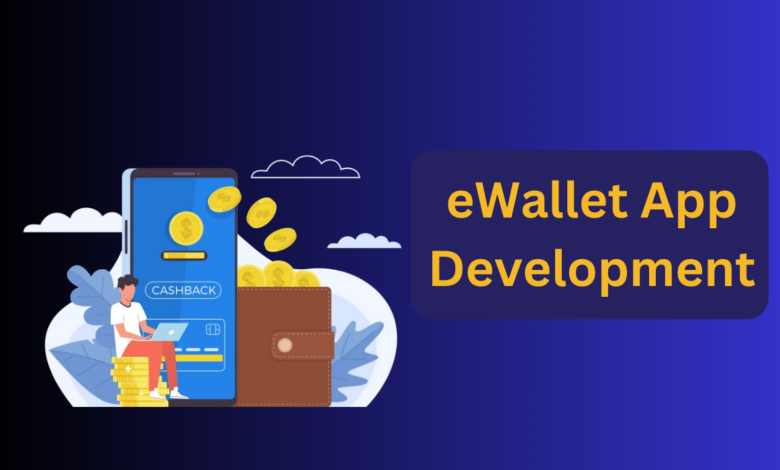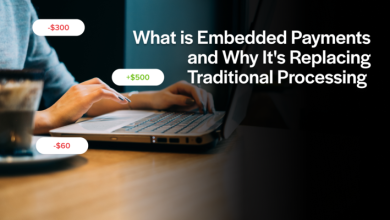
The rise of cashless transactions and digital payments has led to an increasing demand for eWallet applications. An eWallet app allows users to store money digitally, make instant payments, and easily track financial transactions. Businesses and consumers alike are shifting towards secure, fast, and convenient digital payment solutions.
With the advancements in blockchain, AI, and NFC technology, eWallet apps are becoming more secure and feature-rich. Whether for peer-to-peer payments, bill payments, or online shopping, digital wallets have transformed how people manage their finances.
What is an eWallet App?
An eWallet app is a digital platform that enables users to store funds, send or receive payments, and conduct transactions without using physical cash. It connects with bank accounts, credit/debit cards, and digital assets, providing a seamless payment experience.
eWallets are widely used for:
- Mobile payments and online transactions
- Contactless in-store purchases
- Peer-to-peer money transfers
- Subscription payments and bill settlements
With features like biometric authentication, QR payments, and AI-based fraud detection, modern eWallet apps ensure security and efficiency for users and businesses.
Why Digital Payments Are the Future
The global shift towards digital transactions is driven by:
- The growth of eCommerce and online services
- The rise of contactless and mobile payments
- Government initiatives promoting cashless economies
- Enhanced security measures and fraud prevention
eWallet apps are shaping the future of financial transactions, making payments faster, more secure, and accessible to millions worldwide.
Types of eWallet Apps
1. Closed Wallets
- Issued by a specific company for its customers (e.g., Amazon Pay, Starbucks Wallet).
- Transactions are limited to the merchant’s ecosystem.
2. Semi-Closed Wallets
- Can be used at multiple merchants but require integration agreements.
- Examples: Paytm, Venmo, Apple Pay.
3. Open Wallets
- Linked directly to banks and allow cash withdrawals, transfers, and bill payments.
- Examples: Google Pay, PayPal, Zelle.
4. Cryptocurrency Wallets
- Used for storing and transferring Bitcoin, Ethereum, and other cryptocurrencies.
- Includes hot wallets (online) and cold wallets (offline storage).
Key Benefits of eWallet App Development
1. Secure and Instant Transactions
Encrypted transactions eliminate risks of fraud and unauthorized access while ensuring instant fund transfers.
2. Enhanced User Convenience
Users can pay bills, transfer money, and make purchases effortlessly with a few taps on their smartphones.
3. Reduced Dependency on Cash
Digital wallets reduce the need for physical money, offering a seamless shopping and payment experience.
4. Business Growth and Monetization Opportunities
Businesses can generate revenue through transaction fees, advertisements, and premium features.
6 Easy Steps to Develop an eWallet App
1. Define the App’s Purpose and Features
Determine the target audience, key functionalities, and monetization strategies.
2. Choose the Right Technology Stack
Select frameworks like React Native, Flutter, Node.js, and secure databases like Firebase or MySQL.
3. Design an Intuitive UI/UX
Create a user-friendly interface with easy navigation, minimal steps for transactions, and secure login options.
4. Implement Security and Compliance Measures
Ensure PCI DSS compliance, two-factor authentication (2FA), and end-to-end encryption.
5. Integrate Third-Party Payment Gateways
Support PayPal, Stripe, Razorpay, and bank APIs for smooth transactions.
6. Test, Launch, and Optimize
Conduct performance, security, and usability tests before launching the app and continuously optimize based on user feedback.
How Moon Technolabs Can Help You Build a Secure and Scalable eWallet App
Developing an eWallet app requires expertise in fintech, blockchain, and AI-powered security solutions. Moon Technolabs, a trusted ewallet app development company, specializes in creating secure, scalable, and high-performance eWallet applications.
From biometric authentication to AI-driven fraud prevention, Moon Technolabs provides end-to-end eWallet development services, ensuring compliance with industry standards. Whether you’re launching a peer-to-peer payment system, crypto wallet, or business payment gateway, Moon Technolabs delivers custom fintech solutions tailored to your needs.
Conclusion
The demand for secure, fast, and user-friendly eWallet apps is increasing as digital payments become the norm. Businesses investing in custom eWallet solutions can leverage opportunities for revenue growth, enhanced customer experience, and global market expansion.
For companies looking to develop a feature-rich and secure eWallet app, partnering with Moon Technolabs ensures a smooth development process, cutting-edge technology, and compliance with security standards. The future of financial transactions is digital—now is the time to invest in eWallet development!
FAQs
1. How much does it cost to develop an eWallet app?
The cost ranges from $30,000 to $150,000, depending on features, security, and third-party integrations.
2. What security measures are essential for eWallet apps?
Key security features include encryption, two-factor authentication (2FA), biometric login, and fraud detection.
3. How do eWallets make money?
eWallets generate revenue through transaction fees, premium services, merchant partnerships, and ads.
4. What are the regulatory challenges in eWallet development?
Developers must ensure compliance with PCI DSS, GDPR, AML (Anti-Money Laundering) laws, and regional banking regulations.
5. What is the future of eWallet applications?
The future includes AI-powered smart payments, biometric authentication, blockchain security, and global digital banking solutions.



